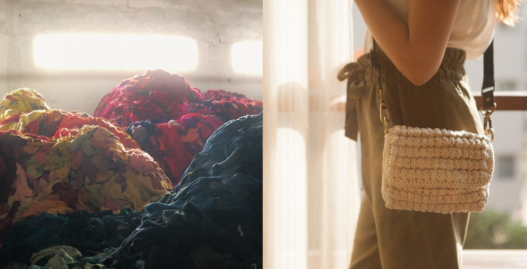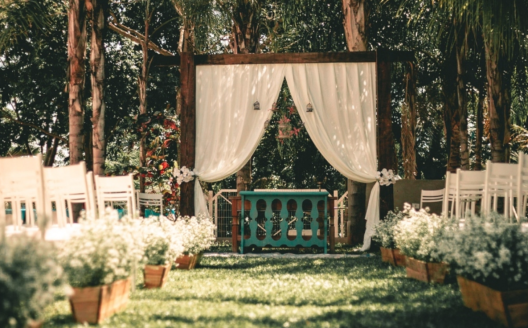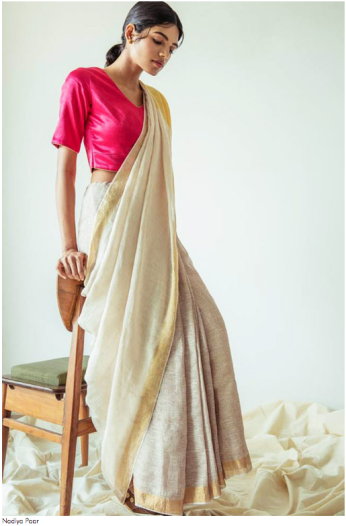Published: The Voice of Fashion, June 13, 2019
Working for the sustainability industry may be a noble choice but it is an ongoing struggle for those who must also make it commercially viable

A label or company that offers sustainable products or services has many challenges in a consumer world that is still unclear about the need for sustainability. These include agreeable pricing, finding suitable collaborators, marrying retail expectations with sustainable production cycles, raising awareness, and through it all, making ends meet.
Here Mumbai-based founders of Chindi, Nadiya Paar and Verandah, who are trying to make a difference with their entrepreneurial ventures on how they negotiate the odds.
Chindi
The Pricing Bubble
An enterprise driven by sustainability has to deal with the lack of awareness about what goes into creating a sustainable product, and consequently, the rationale behind its higher price point. Chindi, a social enterprise that recycles textile waste into luxury accessories handmade by low-income craftswomen in India, finds that sustainability is still a niche space. Says founder Tanushri Shukla, “It’s also difficult to compete with fast fashion brands who have changed customers’ perception of how much products should rightfully cost.” This renders the retail of sustainable products difficult, with the consumer unwilling to absorb the cost.
Therefore, such an enterprise may not always be profitable—and seeing this prevents other entrepreneurs from taking the leap. Also, there is no benefit from a funding standpoint—as Shukla points out, with social enterprises not being legal entities in India, they do not get the same benefits available to non-profit organisations.
On the other hand, Anjali Patel-Mehta, founder of resort label Verandah, finds that while the concept of a sustainably-made garment is not understood by many, it is being used as a marketing device. Thus, there is a blurring in the minds of a consumer.
Patel-Mehta struggles to replace her luxury staples like cotton and silk with more sustainable fabric alternatives which have the same texture but are not as taxing on the environment (cotton, for example, requires a great deal of water in its production). She also stresses the need for industry-certified sustainable vendors.
One of the biggest challenges faced by conscious designers is the slow and limited production cycles. Says Megha Kanera of Nadiya Paar, that specialises in handloom saris, “A big challenge is the pace of the ethical industry versus fashion cycles. A piece takes a great deal of effort to produce and stores want new products every four-six months.”
Verandah
The Impact of Change
Shukla feels that change doesn’t have to come from the customers as much as from non-sustainable brands making their money by flogging cheap products that exploit their labour force. She says, “They are the ones who have conditioned customers and their voice is loud—so that should be the first point of change. Customers, on their part, would benefit from building a sense of empathy and awareness about what goes into making and selling handmade, sustainable products.”
But as awareness slowly rises about the searing need for a sustainability conversation, more brands begin to buy into the philosophy, automatically increasing the scale, acceptance, and viability of the sustainability dialogue. For example, Verandah didn’t start out as a conscious label. Patel-Mehta says, “Initially we didn’t stress on sustainable textiles. As our awareness grew about the ‘true cost’ of fashion, we felt it imperative to have sustainable practices.” Today, Verandah’s RTW (ready-to-wear) lines speak the language of upcycling, azo-free dyes and mindful fabrics, while their eco-friendly swimwear line, launched this summer, mostly uses ECONYL® yarn, regenerated from waste materials.
Nadiya Paar
Making Sustainability Work
Shukla started Chindi in response to witnessing first-hand the vast quantities of tailoring waste dumped in Deonar (Mumbai), Asia’s largest landfill. Says Shukla on the motivation to keep going, “It is all on the belief that the work is making an impact. The word ‘chindi’ (which means thrift), which was once considered a negative thing, has now entered the daily parlance of designers.
She also points out that, “As social entrepreneurs, we cannot always measure our success in the same terms that a commercial entrepreneur does. Money may not always flow in, but the impact goes beyond money. We need to pay attention to our stories of change as much as our bank balances.”
Patel-Mehta, who believes she still has a long way to go, says, “I think success is in the efforts and goal-based approach by setting small metrics for your personal philosophy. There is no finish line.”
At the end of the day, the strongest impact is in building a mindful community. Kanera, who shares best practices—like the brand’s seed tags—with her fellow designers, puts it best when she says, “We share vendor or material detail with other labels who now use a similar concept. I also travel with fellow designers to craft hubs so we can give combined bigger orders to weavers to make it viable for them. We do not treat anyone as competition, rather as people working and walking in the same direction.”
















 Padmaja
Padmaja










